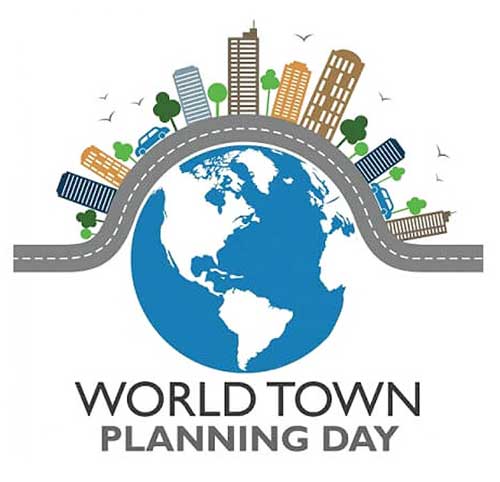
World Urbanism Day, celebrated annually on November 8th, highlights the importance of urban planning in creating sustainable and livable cities worldwide. With rapid urbanization reshaping cities across the globe, World Urbanism Day brings awareness to the need for responsible planning and development. By focusing on sustainable practices and the role of planning in enhancing the quality of life, #WorldUrbanismDay plays a crucial role in shaping the cities of tomorrow.

Outline of the Article
1. Introduction
2. What is World Urbanism Day?
3. The Importance of Urban Planning
4. Challenges of Rapid Urbanization
5. Goals of World Urbanism Day
6. Key Themes in Urbanism
7. Highlighting International Inuit Day Celebrations
8. Sustainable Cities for the Future
9. Urban Planning Innovations
10. Environmental Considerations
11. Case Studies of Sustainable Urbanism
12. The Role of Individuals in Supporting Urbanism Goals
13. Educational Initiatives on World Urbanism Day
14. Global Support for World Urbanism Day
15. Conclusion
What is World Urbanism Day?
World Urbanism Day, also known as "World Town Planning Day," was established to promote the significance of responsible urban planning. The day emphasizes the role of compelling city planning in building resilient communities and creating sustainable living spaces. Founded by Professor Carlos Maria della Paolera in 1949, World Urbanism Day has become recognized globally in over 30 countries.
The Importance of Urban Planning
Urban planning addresses the complexities of modern city living by designing cities that maximize resources, provide infrastructure, and meet residents' needs. Thoughtful urban planning can reduce congestion, improve transportation, and create green spaces, all contributing to a higher quality of life. This day encourages planners and community members to explore solutions for urban challenges.
Challenges of Rapid Urbanization
As the global population grows, urban areas must accommodate increasing residents, often stretching resources thin. #RapidUrbanization can result in overpopulation, pollution, and strain on natural resources. Planning is essential to mitigating the adverse effects of these challenges, especially as cities become hotspots for carbon emissions and environmental degradation.
Goals of World Urbanism Day
World Urbanism Day aims to educate the public about the value of sustainable urban development and bring urban issues to the forefront. Its goals are to inspire new policies, innovations, and solutions that foster sustainable cities, preparing urban areas to handle growth while minimizing environmental harm.
Key Themes in Urbanism
Urbanism encompasses sustainable development, responsible energy use, transportation, and accessibility. These themes align with the United Nations Sustainable Development Goals (SDGs), prioritizing inclusive, safe, resilient, and #SustainableCities. World Urbanism Day underscores the need to create cities that benefit current and future generations by addressing these topics.
Highlighting International Inuit Day Celebrations
On the same note, International Inuit Day Celebrates Inuit Culture and Advocates for Indigenous Rights. Recognizing Indigenous contributions to urban and rural areas helps planners and citizens appreciate the importance of inclusivity and diversity in urban design. Celebrating the Inuit heritage reminds us of Indigenous communities' vital role in preserving cultural and environmental values.
Sustainable Cities for the Future
Sustainable cities incorporate green technologies and infrastructure that reduce environmental impact. From renewable energy initiatives to eco-friendly public transport, sustainable urbanism prioritizes long-term goals over short-term gains. The concept of "green cities" represents an ideal where environmental responsibility and urban efficiency intersect.
Urban Planning Innovations
Advances in technology are transforming how cities are planned and managed. Innovative city technology, which utilizes data to improve urban services and digital infrastructure, is being integrated into modern urban plans. These innovations can help cities optimize resource use, reduce waste, and improve quality of life.
Environmental Considerations
Reducing pollution, managing waste, and creating green spaces are critical for sustainable urban planning. World Urbanism Day encourages cities to adopt eco-friendly practices, such as using renewable energy, designing pedestrian-friendly areas, and conserving green zones to offset the environmental impact of urban growth.
Case Studies of Sustainable Urbanism
Many cities worldwide serve as examples of successful sustainable development. Cities like Amsterdam, Singapore, and Vancouver have implemented effective public transport, urban farming, and green energy solutions. These cities set the standard for urban centers transitioning to sustainable models.
The Role of Individuals in Supporting Urbanism Goals
Sustainable urbanism isn't solely the responsibility of planners and policymakers; residents also play a crucial role. By participating in local initiatives, conserving resources, and supporting green practices, individuals contribute to a collective urbanism goal of building sustainable communities.
Educational Initiatives on World Urbanism Day
World Urbanism Day hosts various educational events to spread awareness, including lectures, community programs, and school activities that educate people on urban planning. These initiatives engage communities, encouraging them to be part of the solution.
Global Support for World Urbanism Day
Organizations like the United Nations and various environmental NGOs back World Urbanism Day. By uniting communities, governments, and businesses under shared goals, World Urbanism Day promotes a cohesive approach to urbanism that is both inclusive and sustainable.
Conclusion
World Urbanism Day emphasizes the need for sustainable and mindful urban planning, urging cities to adopt practices supporting communities for future generations. As cities continue to grow, observing World Urbanism Day can inspire people and policymakers to envision a future where urban spaces coexist harmoniously with the environment, inclusivity, and cultural diversity.



